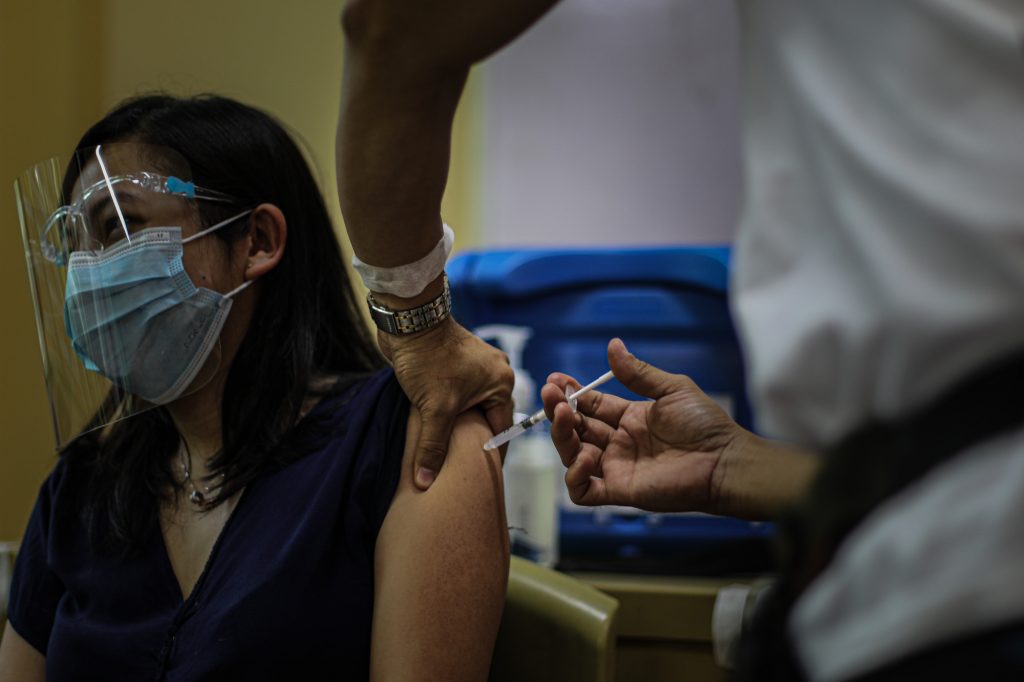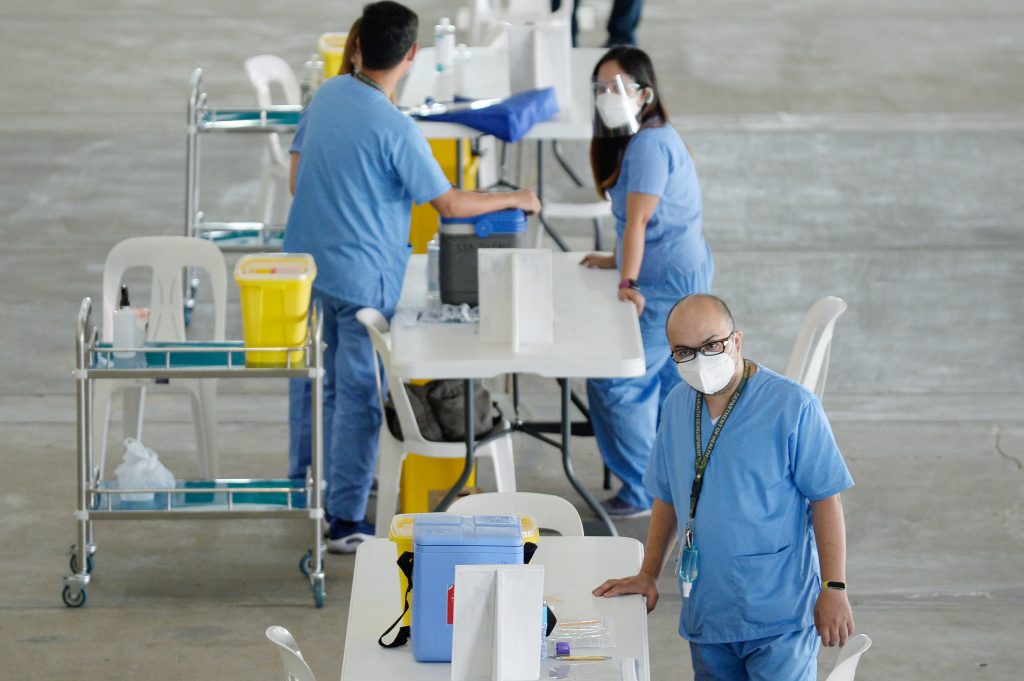
Several Asian countries scrambled to find alternative sources for COVID-19 inoculations on Tuesday after export restrictions by manufacturer India left a World Health Organization-backed global vaccine sharing program short of supplies.
South Korea, Indonesia and the Philippines are among countries to be hit by shipment delays to vaccines they have been promised under the COVAX program, which was created mainly to ensure supplies for poorer countries.
“Our planned increase in daily vaccinations will be affected,” said Carlito Galvez, Philippines’ vaccination chief.
India, the world’s biggest vaccine maker, put a temporary hold on exports of AstraZeneca’s vaccine being manufactured by the Serum Institute of India (SII), as officials focus on meeting rising domestic demand.
The Serum Institute was due to deliver 90 million vaccine doses to COVAX over March and April and, while it was not immediately clear how many would be diverted for domestic use, program facilitators warned that shipment delays were inevitable.
Philippine President Rodrigo Duterte loosened government restrictions on private sector imports of vaccines, pleading with companies to obtain supplies no matter the cost, as his country battles a resurgence of the pandemic.
Strict quarantine protocols in Manila
In Manila, Health Undersecretary Maria Rosario Vergeire said the Health department has recommended that the “enhanced community quarantine” in the capital and nearby provinces should be extended by another week.
On Tuesday, March 30, Vergeire said the ideal period for quarantine restrictions to impact the spread of cases was still at two weeks, as this was the incubation period for the coronavirus.
“One week really is short. We have recommended an extension. But of course, we need to balance it off with the economy,” she said in a television interview.
The ECQ – the strictest quarantine measure in the Philippines – is currently in place for a minimum of one week from Holy Monday, March 29, to Easter Sunday, April 4.

Vergeire said the goal of the ECQ is to slow down the spread of cases by decreasing mobility of people, augment resources of hospitals, manage the flow of patients, and strengthen the response of local governments to test and isolate both suspected and confirmed cases.
A steep increase in cases in recent weeks has brought the pandemic in the Philippines to it worse phase yet, with over 10,000 new cases reported daily – the highest since the health crisis started.
Vergeire said it was possible that one week was also too short to make an assessment on any progress in some key indicators, like the number of daily cases and health care utilization.
“As I have said, we won’t even see any changes in our numbers. We might see more numbers after this one week because what we are seeing right now is the numbers two weeks prior to this week,” she said.
“We are still going to see an accumulation of these numbers in the next two weeks,” added the Health official.
The Health department has earlier said that an ECQ was necessary to prevent active cases from growing threefold from the current 105,000 active cases.
Without hard restrictions that could blunt the spike in cases, Health officials projected the country could see about 430,000 active cases by end-April – a scenario that could cripple the health system. – with a report from Reuters
Source: Licas Philippines
0 Comments